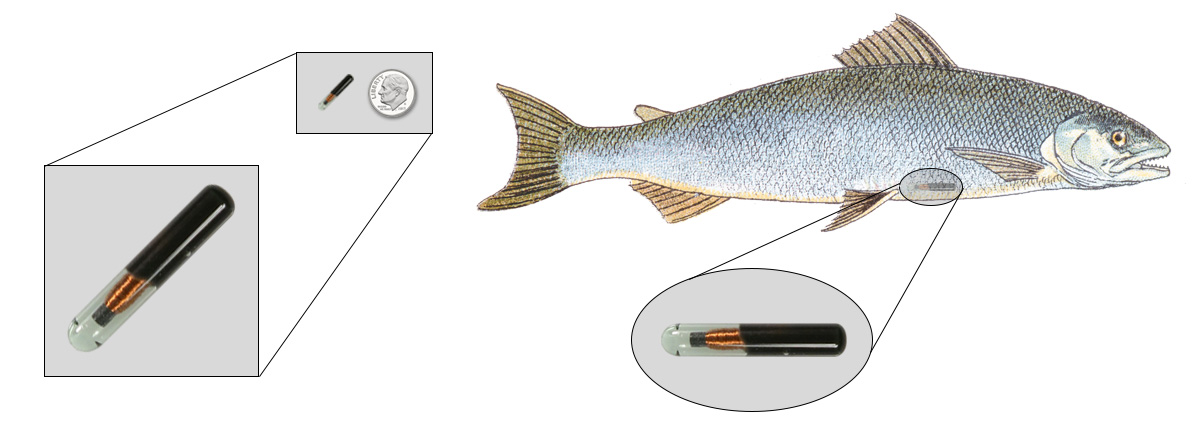The acronym PIT Tag stands for “Passive Integrated Transponder” Tag, but what does this really mean?
It all started in 1935 when Scottish physicist, Sir Robert Watson-Watt, developed a system to warn of approaching planes while they were still miles away. Since then much has changed, but Watson-Watt’s insights have allowed researchers to do many great things with RF technology.
For simplicity, lets break down the PIT tag into three components:
“P” Passive
This means the transponder does not require a battery. The transponder derives its power from a larger power coil which excites the coil inside the transponder, providing enough energy to power the circuit to turn on and broadcast its unique identification information.
“I” Integrated
This is the combination of the microchip, coil, and information in the form of a Unique Identification number programmed onto the microchip inside the transponder.
“T” Transponder
Simply means a device that emits an identifying signal in response to an interrogating received signal.
In basic terms, a PIT Tag is an implantable transponder used for unique identification of individual items. Their small size, biocompatibility and frequency in which they transmit information makes them ideal for identification and tracking of wildlife, including fish, birds, reptiles, or mammals. In order to transmit information through liquid and biological tissue, we need a low frequency (LF) measured in “mHz”. At any higher frequency, the signal transmission is lost in the fluids and cannot be read.
PIT tags are offered in various sizes for all species, but the standard size is 2.1mm x 12mm. This provides a perfect size with good read range.
In the 90’s, many companies tried to create a “lock” on the transponders by using a propriety protocol. This was a benefit to the manufacturer, but bad for the researcher. Most recently, there has been a move to standardize the communication and how the tags “talk” to the readers. FDX-B is now the standard for this communication protocol. Standardizing at FDX-B and 134.2 kHz allows for easy and hassle-free reading of all microchips. Since these tags can last 15+ years, a standard had to be set. For questions pertaining to research projects or information about PIT Tags, contact us at info@animal-microchips.com or 1.224.444.8484.


